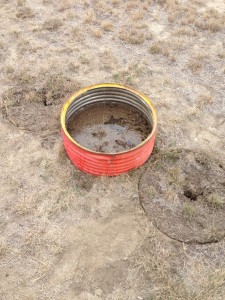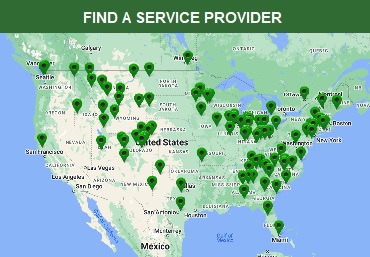We’re excited any time the effectiveness of the EarthBuster can be demonstrated through science, welcome all academic/scientific studies. This page links to the studies we know of so far, whether initiated by EarthBuster, or by any third party.
Title: On-Site Testing of Earthbuster – Deep Soil Decompactor
By: Eric Stahl / Stahllion, LLC
Location: Laurel, MT, USA
Date: 10 July 2023
DESCRIPTION: This study was commissioned by EarthBuster “to analyze where and how the fracture seams occur when in use.” That is, particularly, to determine whether EarthBuster creates fractures downward from the tip of the probe in the ground. The study introduced a colored tracer powder into the EarthBuster air stream before injecting the air, and then dog up the EarthBusted job site to trace in the soil which direction the fractures had gone. Here’s the final sentence of the conclusion: “In the testing conducted, tracer powder was not found to have traveled deeper than the injection points during the testing in these soils.

Our ground absorption test measured how long it would take 5 gallons of water to soak into the soil, both before and after an EarthBuster treatment. The treated areas absorbed six times faster than the untreated areas!
Title: Field Testing the EarthBuster Device for Enhancing Soil Drainage through Severe Hardpan by Pneumatic Soil Fracturing
By: Designed and written for EarthBuster by Jack Pelham and Steve Krug.
Location: Laurel, MT, USA
Date: 5 October, 2015
Summary: We measured the rate at which water is absorbed into the ground in a field known to have a very thick and compacted layer of “hardpan”Hardpan is the name for a very hard layer of soil that can develop a few inches under the ground surface. Hardpan can be several inches thick, and it makes it very hard for surface water to sink deeply into the soil. EarthBuster breaks up hardpan and restores drainage into the soil beneath. beneath the surface. The average (untreated) test site took 17 minutes and 30 seconds to absorb 5 gallons of water. Then we used the EarthBuster device on a nearby area in the same field, and we measured the absorption at the spots where we had used the EarthBuster. On these sites, the same 5 gallon measure of water was absorbed in an average of 2 minutes and 50 seconds. In other words, the “EarthBusted” ground absorbed the water in about 1/6 the time it took for the untreated ground to do it! We think this has some very encouraging implications for agriculture, groundskeeping, and the septic industry. (This is just a summary; be sure to find the entire study linked by its title above.)


